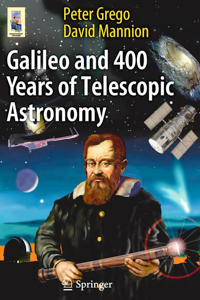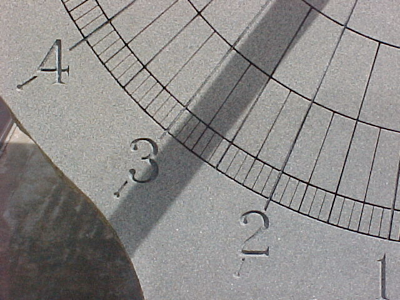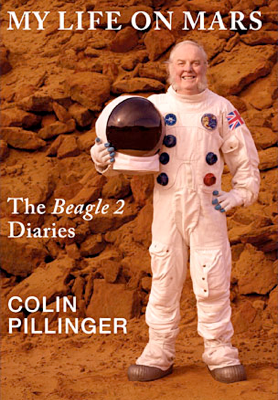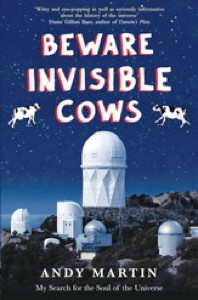Author Archive
Astronomical Calendar
Sunday, December 19th, 2010
 A new astronomy website is available which provides up to date information on upcoming celestial events and is intended as a quick way to access a calendar of astronomy. One feature is a mailing list which sends a regular bulletin of the coming month’s events. You can access the site at http://astronomical-calendar.org.uk
A new astronomy website is available which provides up to date information on upcoming celestial events and is intended as a quick way to access a calendar of astronomy. One feature is a mailing list which sends a regular bulletin of the coming month’s events. You can access the site at http://astronomical-calendar.org.uk
The calendar information and other astronomy related matters are also announced on Twitter (http://twitter.com/AstroCalendar) and a monthly calendar is available by email by subscribing to the email list.
Peter Grego and David Mannion – ‘Galileo and 400 years of Telescopic Astronomy‘
Sunday, December 19th, 2010

Sunday 19th December 2010
You may be interested in a new book by Peter Grego (Editor of Popular Astronomy magazine) and David Mannion, entitled ‘Galileo and 400 years of Telescopic Astronomy‘.
The book is a description of astronomical discovery over the last 400 years and looks at what might happen to Telescopic Astronomy over the whole EM spectrum, plus the new astronomies of Neutrinos, Cosmic Rays and Gravitational Waves in the next 40 years! There are descriptions of many projects that can be undertaken by the reader and the Foreword is written by Sir Arnold Wolfendale FRS (14th Astronomer Royal).
The book is published by Springer and can be found at all decent bookshops, retailing at £26.99.
Spring 2011 Programme
Saturday, December 11th, 2010
 Because of the refurbishment of the Vinter Room, please note that our February and March meetings will be held in the function room of the Conservatory. The location of the April and May meetings will be confirmed nearer the time and posted on the Meetings page, where you can always check the details of the next meeting and find a write up of each meeting after the event. We’ll also continue to post reminders closer to the date on the Club News RSS feed.
Because of the refurbishment of the Vinter Room, please note that our February and March meetings will be held in the function room of the Conservatory. The location of the April and May meetings will be confirmed nearer the time and posted on the Meetings page, where you can always check the details of the next meeting and find a write up of each meeting after the event. We’ll also continue to post reminders closer to the date on the Club News RSS feed.
This Spring we have some great talks lined up and start the programme in January by teaming up with the BBC Stargazing Live event. Here’s what you’ve got to look forward to;
Wednesday 12th January (at the Vinter Room)
Professor Alan Aylward, head of the Atmospheric Physics Laboratory at University College London, will present “From Daedalus to Dan Dare to Daedalus: Can we go to the stars and what would we find if we get there?”. Having "conquered" the solar system – at least with our robot emissaries – the question changes to whether we could actually send spacecraft to other planetary systems around other stars. The first serious study on this was carried out in Britain in the 1970s and concluded even that even with the technology then, it was feasible. However that mission had a fairly limited scope, and at least one serious technological weakness. Over 30 years later, how much progress has been made – is interstellar travel really feasible? As we consider the going, the possible targets are starting to take focus. Following the first definite proof of a planet around a "normal" star in 1995 the study of exoplanets has boomed. Not only do we know of hundreds of them but we are beginning to be able to measure their atmospheres and environments. The race is on to find the first arguably habitable planet outside the solar system.
This meeting will be held in association with the BBC Stargazing Live programmes to be shown on BBC2 between January 3rd and 5th. We are hoping to attract new members who have been watching the programmes and we will have telescopes available for observing after the talk (weather permitting!). If you want to bring along your scope, please do so.
Wednesday 2nd February (at the Conservatory)
Club member Mike Nicholls, one of our newer members, will present "Astro Navigation in Aviation". Mike learnt to navigate by the stars when he was in the RAF (before GPS was invented!) and he will describe some of the techniques he used.
Wednesday 2nd March (at the Conservatory)
Andrew Pontzen, from the Kavli Institute for Cosmology at Cambridge (KICC), will present "Demystifying Astronomical Statistics". Andrew says this will be the world premiere of this new talk!
Wednesday 6th April (venue to be confirmed)
Nick Achilleos, from the Atmospheric Physics Laboratory at University College London, will talk about his work with the Cassini Mission, investigating the magnetosphere of Saturn.
Wednesday 4th May (venue to be confirmed)
Speaker and location to be confirmed. Details to follow.
As usual, we will take a summer break in June and July. The autumn programme will commence with the annual club picnic on Wednesday 3rd August.
St Neots Astronomical Association – special observing sessions
Sunday, November 14th, 2010
 St Neots Astronomical Association are arranging public observing sessions at the Visitors’ Centre at Paxton Pits Nature Reserve (see map above). These are on Wednesday evenings at 7.30pm and will be held on the following dates;
St Neots Astronomical Association are arranging public observing sessions at the Visitors’ Centre at Paxton Pits Nature Reserve (see map above). These are on Wednesday evenings at 7.30pm and will be held on the following dates;
• 17th November
• 24th November
• 8th December
• 22nd December
If it is cloudy and observation is difficult, the meetings will still go ahead with a short talk on an astronomical subject plus demonstrations on how to use binoculars, telescopes and star atlases.
Come along and enjoy. We hope to arrange further dates for 2011.
To find out more contact David Roberts by email (davidr.astro@btinternet.com) or telephone (01480 212960).
Leonard Honey – “Sundials, ancient and modern”
Wednesday, November 3rd, 2010
 This month’s talk was by Leonard Honey from Science Replicas based in North London. His interest in antique scientific instruments was reflected in a talk about sundials and their construction. Like many people, I thought that sundials were only found as static objects attached to walls or on plinths in the garden; this is clearly not the case, as apparently portable sundials were available after the twelfth century for use by the wealthy. Prior to that point the ancients used sticks to cast a shadow onto the ground or a hemispherical hollow carved in stone.
This month’s talk was by Leonard Honey from Science Replicas based in North London. His interest in antique scientific instruments was reflected in a talk about sundials and their construction. Like many people, I thought that sundials were only found as static objects attached to walls or on plinths in the garden; this is clearly not the case, as apparently portable sundials were available after the twelfth century for use by the wealthy. Prior to that point the ancients used sticks to cast a shadow onto the ground or a hemispherical hollow carved in stone.
Leonard described the various types of portable sundial produced between the 16th to 18th Centuries (an activity known as dialling). Only when mechanical clocks became more reliable in the 19th Century did the use of sundials decline. We were shown some beautiful pictures of pillar dials which have a fixed pointer (gnomon) that casts a shadow down the outside of a tube marked with specific dates. Its use is limited to a particular location, so the introduction of the ring dial with a device to measure the sun’s height in the sky meant that the instrument could be used anywhere on the planet. The very attractive diptych dials were also described – these are folded into a small case like a closed book, with a small wire passing down across two faces acting as the gnomon. These portable sundials are very ornate, some in ivory cases, and covered in markings, including the names of European towns as reference points. Lastly we were shown pictures of a series of portable flat sundials with an enclosed compass.
Although these instruments are no longer in use, they have enormous aesthetic value as well as historical interest. Leonard and his wife brought along a display of replica dials and other astronomy related material which generated a lot of interest. These items can be purchased from Green Witch in Dry Drayton, or directly from Science Replicas.
November Meeting Reminder
Sunday, October 31st, 2010

Sunday 31st October 2010
Don’t forget that the November meeting is this week, Wednesday 3rd November. Leonard Honey will present “Sundials, ancient and modern”.
As usual the meeting will be held at 7.30pm in the Vinter Room, Vinter Close, Papworth Everard. Check out the Meetings page for a map.
Colin Pillinger – “My Life on Mars (The Beagle-2 Diaries)”
Wednesday, October 20th, 2010

Wednesday 20th October 2010
Prof. Colin Pillinger has recently released his new book “My Life on Mars (The Beagle-2 Diaries)” documenting the story of Beagle-2. The boook is published by the British Interplanetary Society and available from most good book shops for about £20.
Colin visited Papworth to speak to the Club about the Beagle-2 project back in March 2001. The BBC Science Correspondent, Jonathan Amos, posted a review of the book and a discussion of the Beagle-2 legacy in his “Spaceman” blog. The blog includes footage of a rocket launch in which a copy of the book was blasted into the sky “high above Cambridgeshire”. It maybe a tenuous link, but I did wonder if the rocket was launched at an EARS event, in the fields between Papworth and Elsworth?
Prof Anthony Hewish – “Radio-astronomy, inflation and the design of the Universe”
Wednesday, October 6th, 2010
 We were very honoured to have Professor Tony Hewish talk to us about some of the outstanding problems raised by modern cosmology. He of course has a long and distinguished career in radio astronomy and is a Nobel laureate in physics, so his audience was treated to an authoritative review of cosmology since the beginnings of his research career in Cambridge after WWII.
We were very honoured to have Professor Tony Hewish talk to us about some of the outstanding problems raised by modern cosmology. He of course has a long and distinguished career in radio astronomy and is a Nobel laureate in physics, so his audience was treated to an authoritative review of cosmology since the beginnings of his research career in Cambridge after WWII.
Working with Martin Ryle and colleagues, Tony used ex German radio equipment to build a radio telescope at Lords Bridge off the A603 and before that, an array on the playing fields behind Grange Road in Cambridge. The purpose of this was to identify strong radio sources in the sky and match them to their optical counterparts. Having achieved this with the intense radio source Sagitarius A, many other radio galaxies were identified along with quasars and pulsars as the years went on.
After this historical overview of the Cambridge research, attention was turned to the first of the two main problems with our understanding of the universe, namely the nature of dark matter. An audit of mass in the universe based on the motions of galaxies and the phenomenon of gravitational lensing implies that there must be a much larger percentage of as yet unidentified mass that has no interaction with normal matter. This ‘dark matter’ comprises about 23% of the universe, with normal atoms being only 4.6%. The remainder is a mysterious ‘dark energy’ that pervades the universe and is involved in inflation. This is the idea developed by the physicist Alan Guth that the universe rapidly expanded an infinitesimally small time after the Big Bang that started the universe. Tony Hewish had some success in explaining the complex quantum theory behind Guth’s theoretical prediction of how inflation works, but it isn’t easy for the novice. The idea that a perfect vacuum still contains energy is hard to get the head around, but it does explain the source of energy that drives inflation. We were shown a remarkable graph with data from the WMAP space observatory that measures changes in the microwave background. This was remarkable because Guth’s theoretical calculations of the expected values overlapped the experimental data to an extraordinary degree.
The talk was concluded with a discussion of String Theory in which space and time are in eleven dimensions rather than four. The theory attempts to explain gravity and dark energy, but seems to be more in the realms of mathematical philosophy. We were left with the feeling that much has happened since Tony’s first radio astronomy experiments over fifty years ago, but that actually more problems have been raised than solved. This is part of the appeal of science as well, as the challenge!
Dr Andy Martin – “Beware Invisible Cows”
Wednesday, September 1st, 2010

Wednesday 1st September 2010
Andy works in the Faculty of Modern & Medieval Languages, but is also a surfer, writer and historian with an interest in science and philosophy. These latter interests prompted him to write a book called “Beware Invisible Cows” in which he describes a philosophical journey towards understanding how the universe began. This led him to visit the twin 10 metre telescopes at the Keck observatory in Hawaii. The mountain access road to the top of the mountain has limited visibility at times, as well as roaming cattle, hence the road sign which prompted the title of his book and talk to us.
We were presented with a sort of ‘stream of consciousness’ about the different ways of seeing back in time – the mirrors on telescopes do this, because the light falling on them has a history; it’s the same as a person looking at their reflection in a mirror, they are looking at history, even though it is only a few nanoseconds back. Punctuating these reflections (no pun intended) were comments about Andy’s physicist twin brother who tried to build a device that could communicate with the ‘flying saucer’ that Andy had seen over his house! I didn’t understand the physical principles of this device, let alone believe in flying saucers, but it was an interesting (if somewhat bizarre) departure from the main theme of the talk. The mirrors of the Keck telescopes are used to look back in time, but they can only reach so far- there is a limit of about 380,000 years after the Big Bang where no electromagnetic radiation can be observed. However, Einstein predicted the existence of gravitational waves in his General Theory of Relativity and these should be detectable further back in time.
These musings prompted Andy to visit the Laser Interferometer Gravitational-Wave Observatory (LIGO) based in Washington State, USA. This consists of an L shaped tube four kilometres long on each side that contains lasers and mirrors designed to detect the impact of a gravitational wave by changing the phase of two light beams interacting together (see http://www.ligo.caltech.edu/ for a proper explanation). Andy pointed out the problems caused by background vibrations from activities on earth, including large waves crashing on the shore miles away in California (prompting the surfers at LIGO to pack up for the day!). No gravitational waves have been detected so far, but the LISA space mission is in the offing which will increase the detection sensitivity by orders of magnitude.
Andy concluded his talk with the words of Sartre and Wordsworth on the origins of the universe and finally with a piece of music by Ligeti (music used in 2001 A Space Odyssey) to illustrate the ‘noise’ of the universe.
“Beware Invisible Cows” is published by Simon & Schuster. Andy Martin’s website is http://www.andymartinthewriter.com/
September Meeting Reminder
Tuesday, August 31st, 2010

Tuesday 31st August 2010
Don’t forget that the first meeting of our Autumn schedule is tomorrow evening, Wednesday 1st September. Dr Andy Martin from the Faculty of Modern & Medieval Languages at the University of Cambridge will present “Beware Invisible Cows”. He will talk about the Keck lab in Hawaii, LIGO (the Laser Interferometer Gravitational Wave Observatory in Washington State) and invisible cows.
As usual the meeting will be held at 7.30pm in the Vinter Room, Vinter Close, Papworth Everard. Check out the Meetings page for a map.